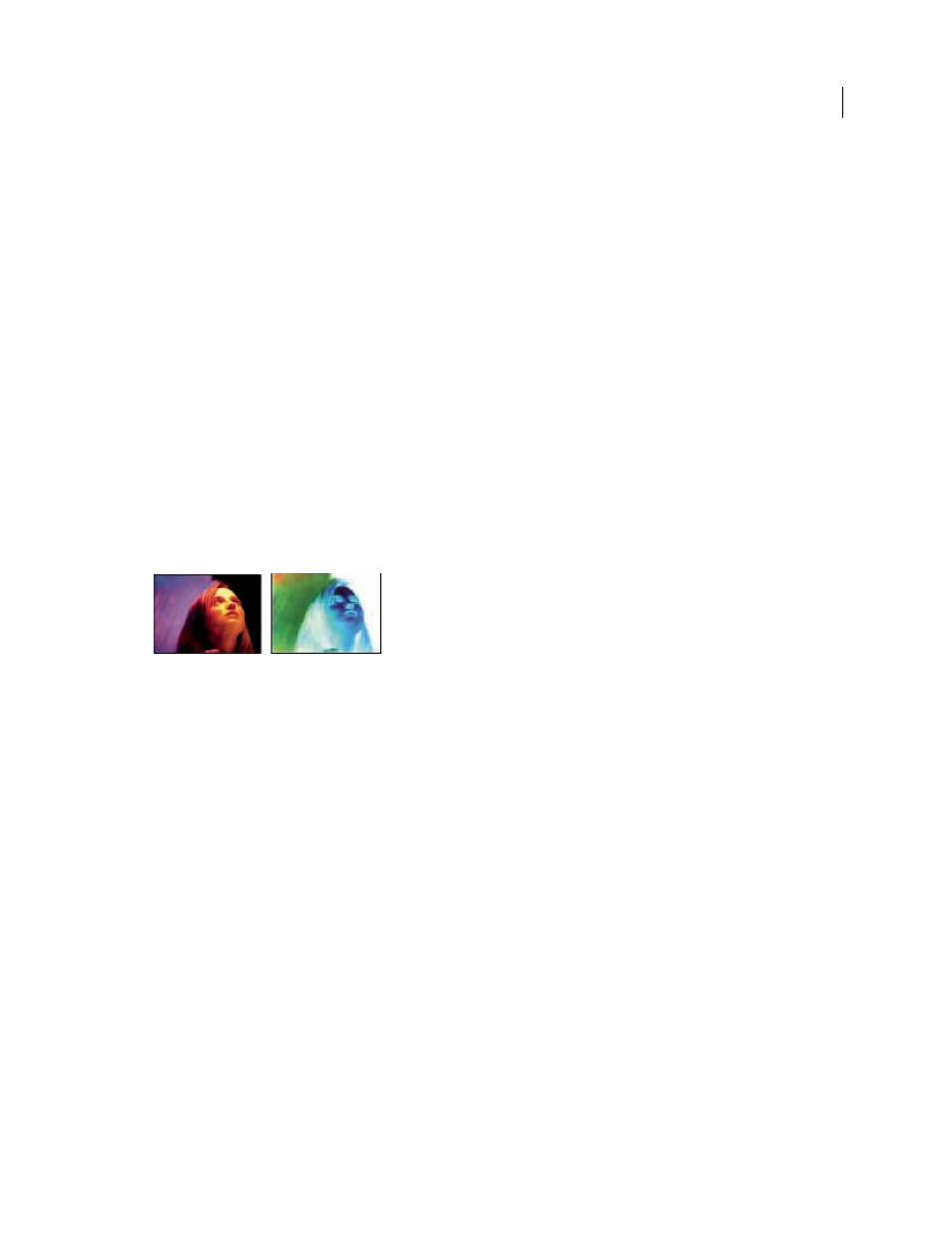Invert effect, Minimax effect – Adobe After Effects CS4 User Manual
Page 456

450
USING AFTER EFFECTS CS4
Effects and animation presets
Last updated 12/21/2009
Overflow Behavior
How the effect remaps values that fall outside the grayscale range of 0-255.
•
Clip
Values above 255 are mapped to 255. Values below 0 are mapped to 0.
•
Wrap
Values above 255 and below 0 are wrapped back around into the 0-255 range. For example, a value of 258
wraps around to 2, a value of 256 wraps around to 0, and a value of -3 wraps around to 253.
•
Scale
The maximum and minimum values are remapped to 255 and 0, and intermediate values are stretched or
compressed to fit within this range.
Stretch Second Source To Fit
Scales the second layer to match the size (width and height) of the current layer. If this
option is deselected, the second layer is placed at the current size of its source, aligned with the upper left corner of the
source layer.
Blend With Original
The transparency of the effect. The result of the effect is blended with the original image, with the
effect result composited on top. The higher you set this value, the less the effect affects the layer. For example, if you
set this value to 100%, the effect has no visible result on the layer; if you set this value to 0%, the original image doesn’t
show through.
Invert effect
The Invert effect inverts the color information of an image.
This effect works with 8-bpc, 16-bpc, and 32-bpc color.
Original (left), and with effect applied (right)
Channel
Which channel or channels to invert. Each group of items operates in a particular color space, inverting either
the entire image in that color space or only a single channel.
•
RGB/Red/Green/Blue
RGB inverts all three of the additive color channels. Red, Green, and Blue each invert an
individual color channel.
•
HLS/Hue/Lightness/Saturation
HLS inverts all three of the calculated color channels. Hue, Lightness, and
Saturation each invert an individual color channel.
•
YIQ/Luminance/In Phase Chrominance/Quadrature Chrominance
YIQ inverts all three NTSC luminance and
chrominance channels. Y (luminance), I (in-phase chrominance), and Q (quadrature chrominance) each invert an
individual channel.
•
Alpha
Inverts the alpha channel of the image. The alpha channel isn’t a color channel; it specifies transparency.
Blend With Original
The transparency of the effect. The result of the effect is blended with the original image, with the
effect result composited on top. The higher you set this value, the less the effect affects the layer. For example, if you
set this value to 100%, the effect has no visible result on the layer; if you set this value to 0%, the original image doesn’t
show through.
Minimax effect
The Minimax effect assigns each channel of a pixel the minimum or maximum value for that channel found within a
specified radius.
